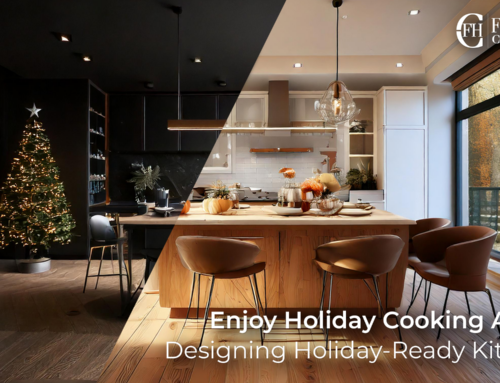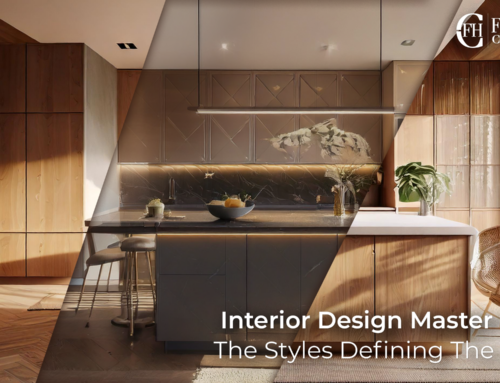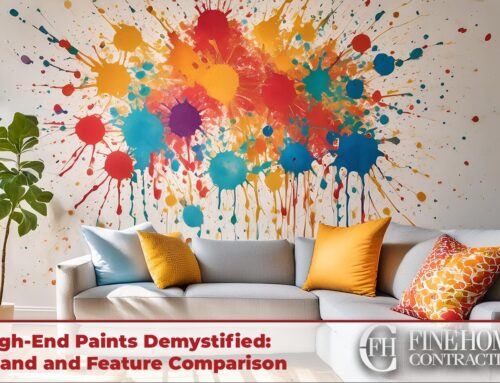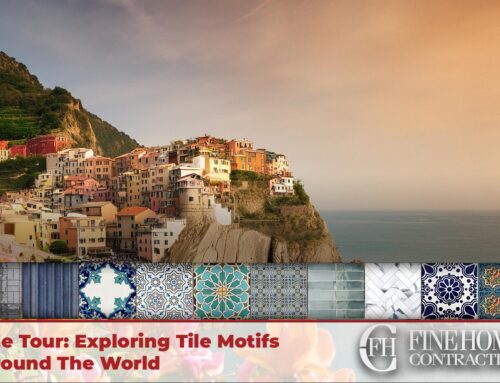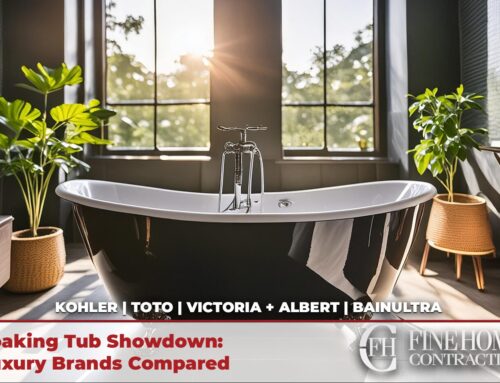Interior design is far more complex than just making a space look nice. The best interior designers understand that good design directly impacts how people experience and interact with a space, and work with their clients to have a deep understanding of how their space can accommodate their needs and make life easier. Whether you’re decorating a newly built home, remodeling existing rooms, or working on a home addition, knowing the core techniques designers use to create coherent spaces is the first step to a well-designed space. Today we’ll run thorough a quick look at the core elements that form the cornerstones of interior design theory.
Functionality
The functionality of a space is the foundation that underpins all other elements of design. If a space does not work on a practical level, even the most beautiful design choices will falter.
Practicality and Usability
Great interior design is highly usable for its intended purpose. All layout choices, material selections, and decorative elements must put practicality first. For example, a kitchen should facilitate cooking and conversation, with appliances and seating arranged accordingly.
Starting your design with a functional floorplan is the best way to ensure function is a priority throughout your project: Kitchens should start with a kitchen triangle, bathrooms should be planned around the core fixtures, and other rooms such as living rooms and foyers should be designed to accommodate both traffic flowing through them, and their intended use.
Accessibility and Inclusivity
Well-designed interiors are accessible and welcoming to users of all ages and abilities. This includes open layouts, cues for those with low vision, and accommodations for physical limitations. Designing for accessibility benefits everyone in the long run. For a plethora of accessibility-focused tips, check out our page on Aging in Place and our CAPS blogs
Build Around Purpose
At the end of the day, a room built for function will receive a lot more use than one built for aesthetics. If your design choices compromise the functionality of the room, it’s important to redefine your priorities and approach the room from a utilitarian mindset.
Aesthetics
Aesthetic choices bring joy, set moods, and create visual harmony. While aesthetics are meant to complement function, poor aesthetic choices can also undermine it and make a room overwhelming or plain.
Color
Color profoundly impacts aesthetics and psychology. Designers skillfully choose color palettes that align with the intended tone and use of each space. One of our favorite ways to find modern, popular color choices is through Sherwin William’s color of the year program. Other options include pinterest moodboards, color palette apps online, or consulting an interior designer for help.
Texture
Texture adds visual interest and helps create a unified feel. Smooth, coarse, soft, sleek – careful texture selection brings spaces to life.
One of our favorite ways to introduce texture into a space is through the use of natural stone and ceramic tile, which come in a variety of finishes, colors, patterns, and shapes. These surface finishings are versatile enough to work in either a traditional, rustic space, or add contrast to modern themes like geometric patterns and neutral tones. For a wide variety of stone and tile options in Connecticut, we recommend Genrose Stone + Tile.
Lighting
Proper lighting sets the scene. Well-lit spaces promote functionality; lighting also establishes mood via intensity, temperature, and placement. We highly recommend smart lighting as an option, as the ability to control the warmth/coldness of your lighting can heavily impact the impression a room gives. See our article on smart appliances for recommendations on smart lighting.
Psychology and Symbolism
Interior design choices impart symbolic meaning and shape how users psychologically experience a space.
Cultural Influences
Many popular design motifs are borrowed from world cultures: Feng Shio principles tend to guide Asian-inspired designs, while geometric motifs and intricate detail are popular in middle eastern architecture. If you’re looking for your home to embody your specific culture, working from the ground up using these design systems and motifs is a great way to ensure your space is designed from the ground up with your particular aesthetic and theme in mind.
Expression of Values
Designs inherently convey what homeowners value most via layout and decorative accents. A library filled with books signals learning is valued there, whereas a professional chef’s kitchen shows the homeowners value entertaining. Building a list of your individual priorities and wants, and creating a design to cater to them is key to ensuring your unique needs and values are represented in the final design.
Emotional Impact
Light, color, and other design factors subconsciously trigger emotional reactions far more than we pay mind to. A dark monotone dining room feels serious, while an airy kitchen with light wood tones imparts cheerfulness. Green tones create a relaxing, subdued feel, while reds are exciting and a great option for entertaining spaces such as dining rooms. Here’s a good article on the use of color theory in interior design.
Sustainability
Sustainable interior design benefits users and the environment through energy efficiency and eco-friendly building practices.
Individuality
Truly successful interior design reflects and enhances the unique identity of the people inhabiting the space.
Interior design is far more than just decorating – it shapes how people interact with and feel within spaces. When design puts human needs first, addressing function, beauty, meaning, environmental impact, and individuality, the results are transcendent. Interior designers hold an exciting opportunity to positively influence individuals’ experiences in everyday life. By taking the time to understand core design principles, even amateur designers can learn to create uplifting, functional spaces that stand the test of time.

